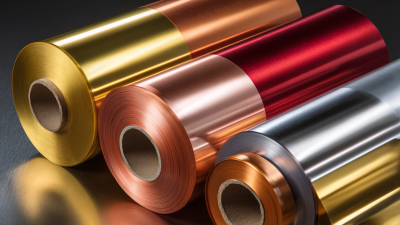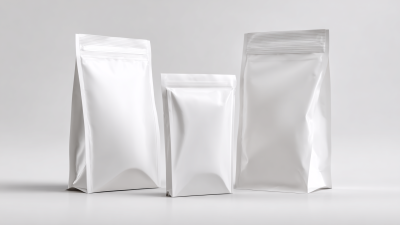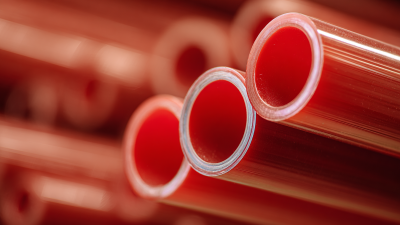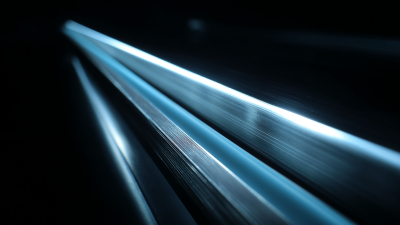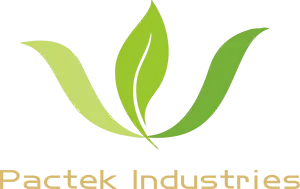Leave Your Message
 In recent years, the versatility and innovative applications of PBL/RPBL laminate film have garnered significant attention across various industries. This advanced material, known for its exceptional properties such as durability, flexibility, and resistance to environmental factors, has emerged as a key player in sectors ranging from packaging and electronics to automotive and medical devices. As industries continuously seek to enhance their products and processes, the exploration of PBL/RPBL laminate film presents exciting opportunities for innovation and efficiency.
In recent years, the versatility and innovative applications of PBL/RPBL laminate film have garnered significant attention across various industries. This advanced material, known for its exceptional properties such as durability, flexibility, and resistance to environmental factors, has emerged as a key player in sectors ranging from packaging and electronics to automotive and medical devices. As industries continuously seek to enhance their products and processes, the exploration of PBL/RPBL laminate film presents exciting opportunities for innovation and efficiency.
This blog will delve into the remarkable examples of how PBL/RPBL laminate film is being utilized, showcasing its transformative impact and the potential it holds for future developments. By highlighting specific case studies and applications, we aim to illustrate the diverse possibilities this laminate film offers, solidifying its position as an essential material in today’s competitive market.
In recent years, PBL/RPBL laminate film has emerged as a game-changer in the packaging industry, offering innovative solutions that meet the evolving needs of businesses and consumers alike. This versatile material combines multiple layers to achieve superior barrier properties against moisture, oxygen, and light, making it an ideal choice for a wide range of products. From food and beverage packaging to pharmaceuticals and electronics, PBL/RPBL laminate film ensures product integrity and extends shelf life, all while maintaining an eco-friendly profile.

As businesses strive for sustainability, PBL/RPBL laminate films are also adapting to incorporate biodegradable materials and recyclable designs. This shift not only addresses environmental concerns but also aligns with consumer preferences for greener options. Furthermore, the film’s flexibility allows for creative packaging designs that are visually appealing and customizable, enhancing brand recognition in a crowded market.
With continuous advancements in technology, the potential applications of PBL/RPBL laminate films in packaging solutions are expansive, promising exciting developments for industries aiming to innovate and reduce their ecological footprint.
The automotive industry has seen a remarkable transformation with the introduction of PBL/RPBL laminate films, which significantly enhance both durability and aesthetics of vehicles. These innovative films provide a robust layer of protection against scratches, chips, and environmental factors, making them an essential component for modern automobiles. With the global paint protection film market projected to grow from $593.9 million in 2024 to $962.6 million by 2032, at a compound annual growth rate of 6.2%, the demand for high-quality protective solutions continues to rise.
PBL/RPBL films not only protect the vehicle's exterior but also improve its visual appeal. They come in various finishes, including glossy and matte, allowing manufacturers to offer customized aesthetic solutions to consumers. This versatility makes them an attractive option for both luxury and mainstream automotive brands, as they can cater to a wide range of consumer preferences. As the automotive sector increasingly prioritizes both functionality and design, PBL/RPBL laminate films are poised to play a pivotal role in shaping the future of vehicle manufacturing and maintenance.
This chart illustrates the impact of PBL/RPBL laminate films on various aspects of the automotive industry. It highlights the improvements in durability, aesthetics, cost efficiency, weight reduction, and UV resistance, showcasing the significant benefits these materials bring to automotive manufacturers.
In the ever-evolving landscape of electronics, PBL/RPBL laminate films are emerging as pivotal materials that enhance both protection and performance. These advanced laminate films offer superior resistance to moisture and chemicals, making them ideal for sensitive electronic components. For devices such as smartphones, tablets, and wearables, where durability is essential, the integration of PBL/RPBL films can significantly extend product life, reducing the need for repairs and replacements.

Moreover, the unique properties of PBL/RPBL laminates contribute to improved thermal management in electronic devices. By effectively dissipating heat, these films help mitigate the risk of overheating, which is crucial for maintaining optimal performance and reliability. Their lightweight and flexible nature ensures that manufacturers can easily incorporate them into various designs without compromising the sleekness and functionality that consumers seek. As industries continue to push for innovation, the adoption of PBL/RPBL laminate films stands out as a game-changer, promising enhanced performance and longevity for a wide range of electronic applications.
The food industry is increasingly turning to innovative solutions like PBL/RPBL laminate films to enhance sustainability practices. According to a report by MarketsandMarkets, the global packaging market is projected to reach $1 trillion by 2025, with eco-friendly packaging solutions like PBL/RPBL films gaining significant traction. These films not only offer excellent barrier properties that preserve food quality but are also designed to be biodegradable, thereby reducing the environmental impact.
Recent advancements in the functionality of PBL/RPBL films include their ability to extend shelf life and maintain freshness without relying on harmful preservatives. A study from the Institute of Packaging Professionals highlights that switching to sustainable packaging can reduce carbon emissions by up to 30%. This aligns with broader industry trends towards adopting sustainable practices, as companies seek to meet consumer demands for environmentally responsible products. With organizations like Republic emphasizing their commitment to sustainability through substantial financial investments, the shift towards PBL/RPBL films in the food sector is poised for accelerated growth.
As we look towards 2030, the future of PBL (Polybutylene Terephthalate) and RPBL (Reinforced Polybutylene Terephthalate) laminate technology holds immense potential, driven by advancements in material science and increasing demand for sustainable solutions across industries. The versatility of PBL/RPBL laminate films, valued for their remarkable strength-to-weight ratio and resistance to chemical degradation, positions them favorably for diverse applications ranging from automotive to aerospace. Industry experts predict that as manufacturers seek to improve fuel efficiency and reduce emissions, the adoption of these innovative films will escalate, significantly reshaping product design and performance standards.
Furthermore, the trend toward sustainable manufacturing practices will likely amplify the development of bio-based and recycled PBL/RPBL materials. Companies are recognizing the importance of minimizing their environmental impact, fueling investments in research that aims to enhance the eco-friendliness of laminate films. By integrating smart technologies, such as IoT-compatible coatings, PBL/RPBL laminates could enable real-time monitoring of product integrity, leading to smarter, more efficient industrial processes. As we progress towards the decade's end, these trends signal a transformative era for laminate technology, paving the way for innovations that will not only meet the growing consumer demand for sustainability but also redefine industry standards across the globe.
| Industry | Application | Expected Growth by 2030 (%) | Key Trends |
|---|---|---|---|
| Automotive | Lightweight Component Production | 25% | Increased fuel efficiency, sustainability |
| Aerospace | Thermal Protection Systems | 20% | Enhanced performance, weight reduction |
| Consumer Electronics | Flexible Display Technology | 30% | Innovative designs, ultra-thin products |
| Medical | Customizable Surgical Instruments | 15% | Personalized solutions, improved safety |
| Construction | Waterproofing Membranes | 10% | Durability, moisture resistance |

